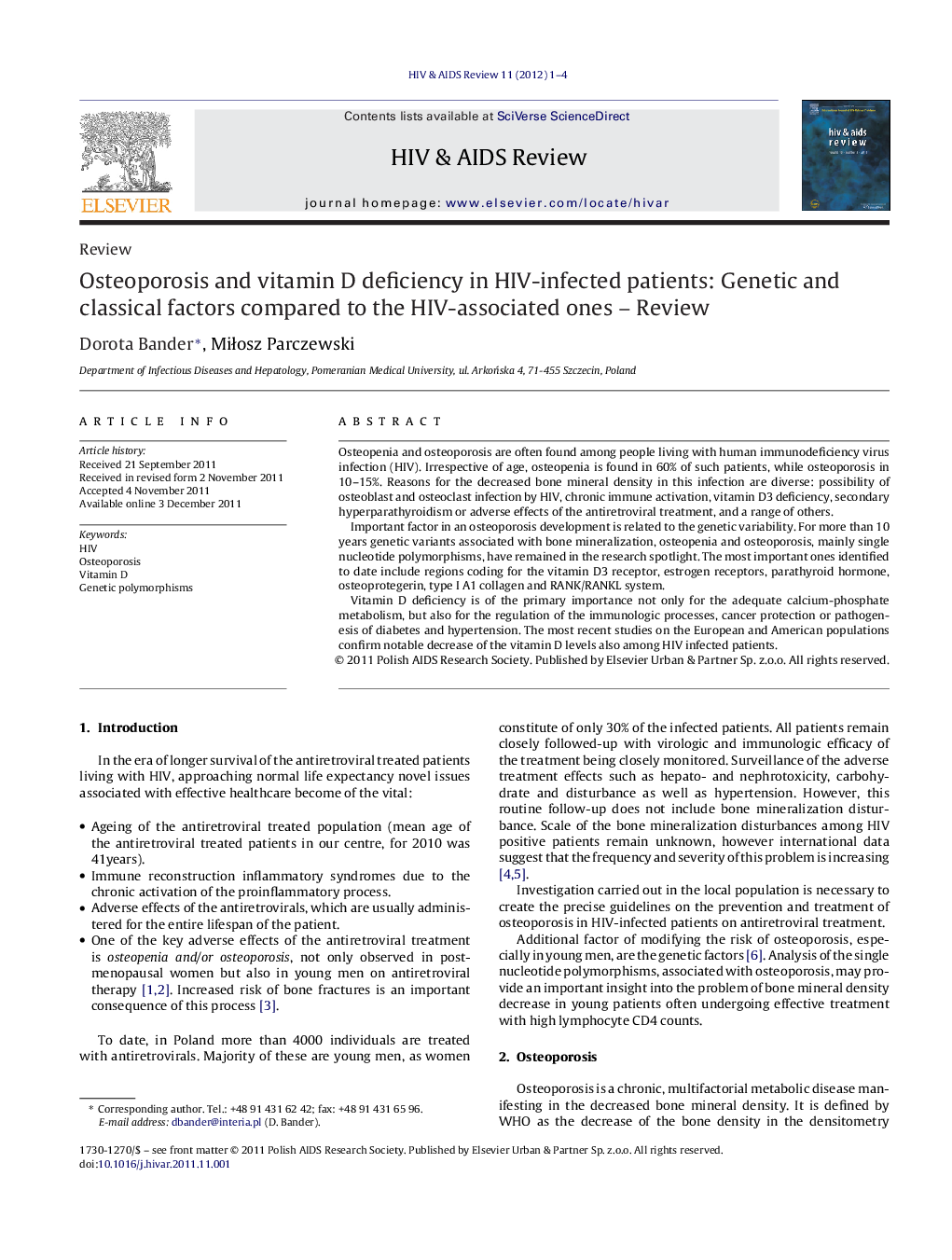| Article ID | Journal | Published Year | Pages | File Type |
|---|---|---|---|---|
| 3332416 | HIV & AIDS Review | 2012 | 4 Pages |
Osteopenia and osteoporosis are often found among people living with human immunodeficiency virus infection (HIV). Irrespective of age, osteopenia is found in 60% of such patients, while osteoporosis in 10–15%. Reasons for the decreased bone mineral density in this infection are diverse: possibility of osteoblast and osteoclast infection by HIV, chronic immune activation, vitamin D3 deficiency, secondary hyperparathyroidism or adverse effects of the antiretroviral treatment, and a range of others.Important factor in an osteoporosis development is related to the genetic variability. For more than 10 years genetic variants associated with bone mineralization, osteopenia and osteoporosis, mainly single nucleotide polymorphisms, have remained in the research spotlight. The most important ones identified to date include regions coding for the vitamin D3 receptor, estrogen receptors, parathyroid hormone, osteoprotegerin, type I A1 collagen and RANK/RANKL system.Vitamin D deficiency is of the primary importance not only for the adequate calcium-phosphate metabolism, but also for the regulation of the immunologic processes, cancer protection or pathogenesis of diabetes and hypertension. The most recent studies on the European and American populations confirm notable decrease of the vitamin D levels also among HIV infected patients.
